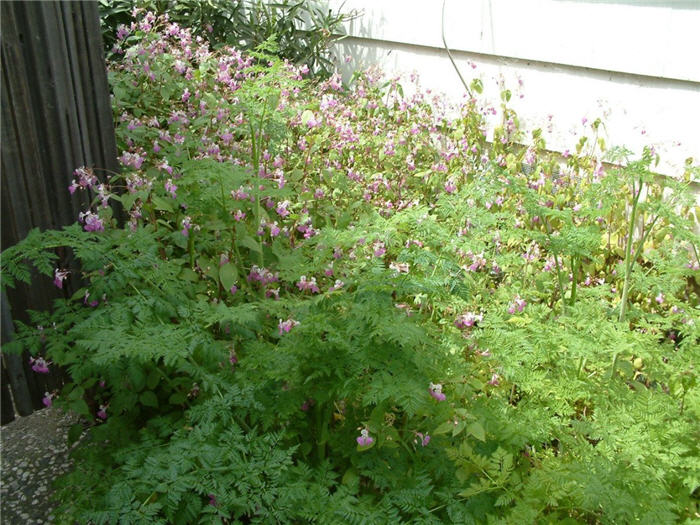| Botanical Name: Dicentra spectabilis | |
| Common Name: Common Bleeding Heart |

-
Anatomy
-
Culture
-
Design
Plant Type
Perennial
Height Range
1-3'
Flower Color
Pink, White, Multi-Colored
Flower Season
Spring
Leaf Color
Green, Blue Green
Bark Color
n/a
Fruit Color
n/a
Fruit Season
n/a
Sun
Half, Shade
Water
Medium, High
Growth Rate
Moderate
Soil Type
Clay, Loam
Soil Condition
Average, Rich, Well-drained, Moist
Soil pH
Neutral
Adverse Factors
n/a
Design Styles
English Cottage, Woodland
Accenting Features
Showy Flowers
Seasonal Interest
Spring
Location Uses
Background, Perennial Border
Special Uses
Cut Flowers
Attracts Wildlife
n/a
Information by: Stephanie Duer
Photographer: Linda Engstrom/Mullany
Photographer: Linda Engstrom/Mullany
-
Description
-
Notes
Bleeding heart is an old-fashioned garden perennial with mounds of deeply lobed foliage and arching stems hung with pink and white heart-shaped flowers. Blooms appear April and May, and the plant may reach 2 to 3 feet in height with the flowers. Width is about 20 to 30 inches. Plant it where it will be disguised in the summer months, as the foliage typically goes dormant; shade-loving perennial grasses, late leafing shrubs, or shady annuals are a good choice.
Grow in well drained, loamy soil in part to full shade. Doesn't tolerate dry sites as well as the other species. In our region, in the heat of the summer it tends to go dormant and the foliage goes yellow; snip it off and mulch around the base. Sometimes, in a long fall, it will re-emerge and even flower again, but generally, you just wait until the next spring, just like the tulips and daffodils.